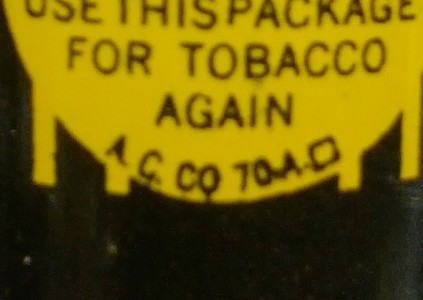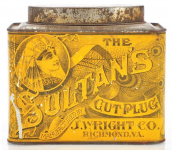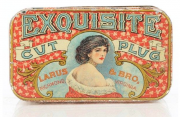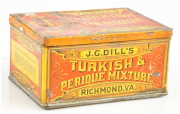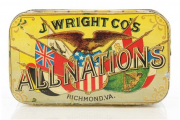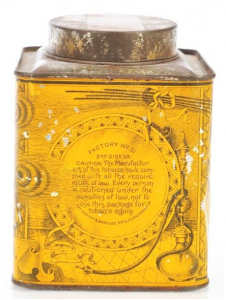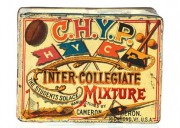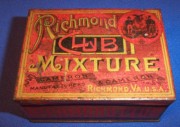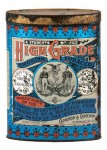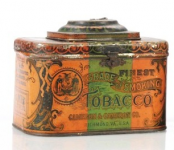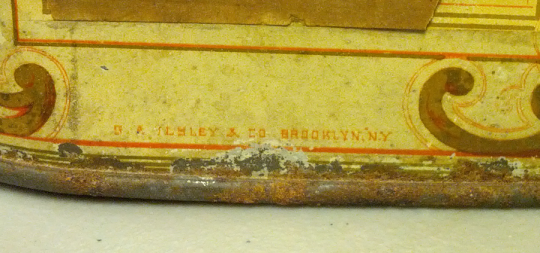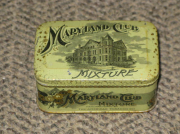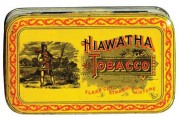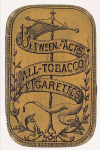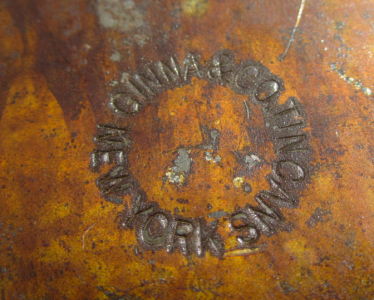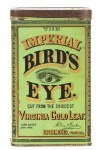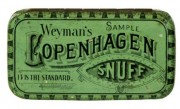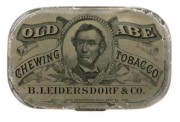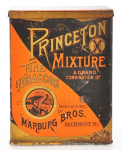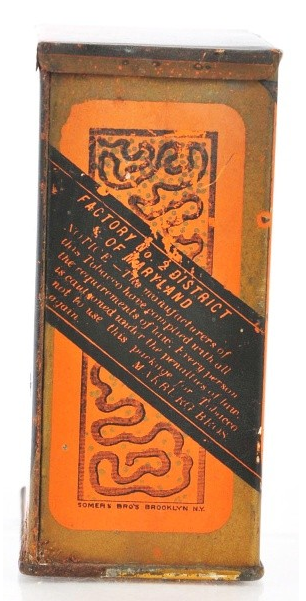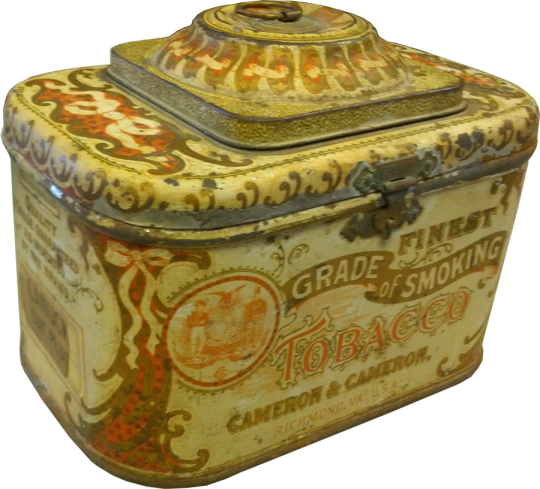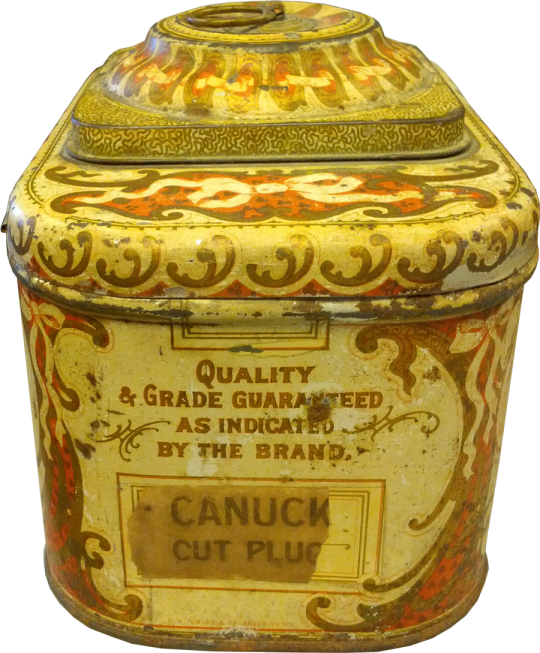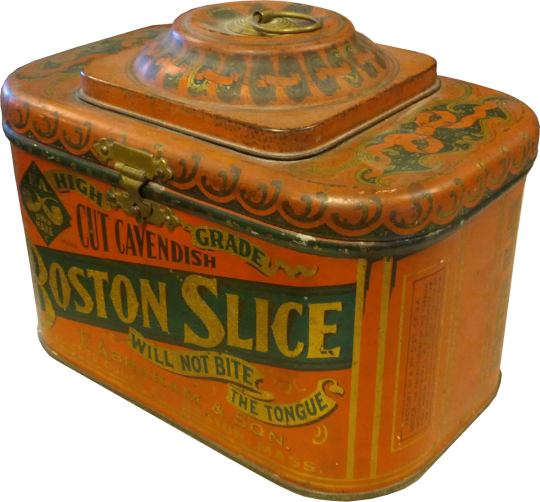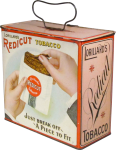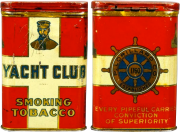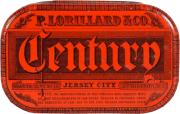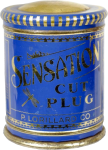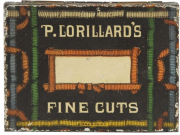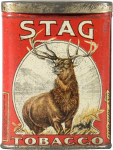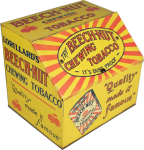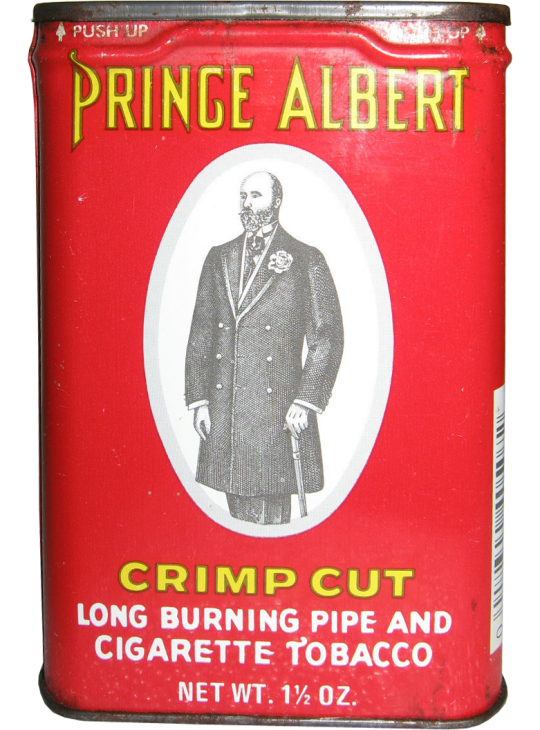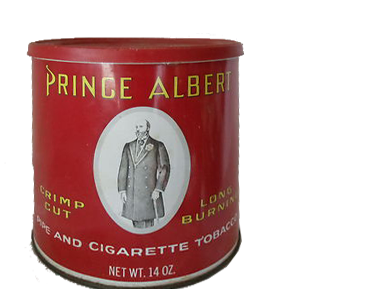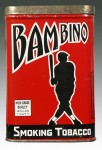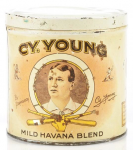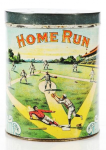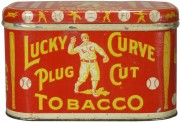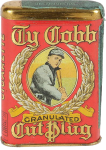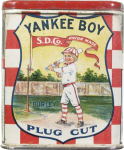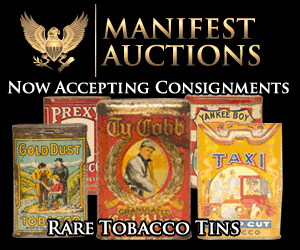American Can Company was formed in 1901 as a merger of many smaller competing firms into one large company that could cut costs with increased scale and lower competition, forming what would be known by many as the Tin-Can Trust. The Company was the dominant force in tin can manufacturing from its inception up until 1913 when the Government sued it to break it back into smaller pieces, the company still continued on after being forced to sell some of its parts, but was a major packaging manufacturer well into the 1970s and 80s before mergers and renamings.
With the original merger in 1901, some of the factories from the original companies were closed or sold off. Each of the remaining entities was given a company designation such as A.C.Co.##-A, marks on the tins produced, sometimes this designation is followed by another two digit number, which indicates the year produced so A.C.Co.50 A 16, would have been produced in the Hasker & Marcuse Factory in 1916.
Below is a list of Manufacturers and their American Can Company code (in use after 1901). If you have information about any of the missing American Can Co. Factories with location and their preceding company names it would be greatly appreciated if you would submit it to dale@antiquetobacco.com
- Campbell Company (A.C.Co.2A) – Waltham, MA
- S.A. Ilsley & Co. (A.C.Co.8-A) – Brooklyn, NY
- Jos LeComte (A.C.Co.9-A) – Brooklyn, NY
- Mersereau (A.C.Co.10A) – Brooklyn, NY
- Somers Bros. (A.C.Co.11-A) – Brooklyn, NY
- American Stopper (A.C.Co.12-A) – Brooklyn, NY
- Wm. Vogel (Vogel Bros.) (A.C.Co.12-A) – Brooklyn, NY
- Ginna & Co. (A.C.Co.14-A) – New York, NY
- U.S. Can Company (A.C.Co.22-A) – Buffalo, NY
- Art Metal Co. (A.C.Co. 25-A) – New Brunswick, NJ
- Phoenix Metal (A.C.Co.27-A) – New Brunswick, NJ
- C.P. Pole (A.C.Co.28-A) – Philadelphia, PA
- Taite (A.C.Co.30-A) – Philadelphia, PA
- Miller (A.C.Co.43-A) – Baltimore, MD
- Hasker & Marcuse Mfg. Co. (A.C.Co.50-A) – Richmond, VA
- Conklin Mfg. (A.C.Co.51-A) – Atlanta, GA
- Beardsley Mfg. Co. (A.C.Co.52-A) – Cleveland, OH.
- Breckinridge (A.C.Co.53-A) – Toledo, OH
- Albert Fischer (A.C.Co.54-A) – Hamilton, OH
- Wisconsin Can Co. (A.C.Co.56) – Milwaukee, WI
- Clark Can Co. (A.C.Co.62-A) – Detroit, MI
- Frank Diesel (Diesel Can Co.) (A.C.Co.69-A) – Chicago, IL
- Illinois Can Co. (A.C.Co.70-A) – Chicago, IL
- Norton Bros. (A.C.Co.73-A) – Toledo, OH
- Horne/Danz (A.C.Co.82-A) – St. Paul, MN
- Columbia Can Co. (A.C.Co.89-A) – St. Louis, MO
- George R. Weed (A.C.Co.104-A) – Brooklyn, NY
Here are images of a few different American Can Company marks, if you have pictures of American Can Co. Marks please submit them to dale@antiquetobacco.com :
American Can Co. Factory 50 (Formerly the Hasker & Marcuse facility) dated to 1916 from a Vanko Cigar Tin
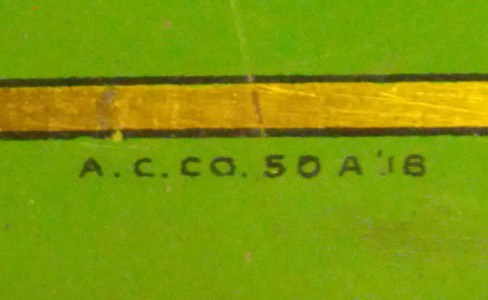
American Can Co. Factory 50 (Formerly the Hasker & Marcuse facility) spelled out, no date code from a Dill’s Best Pocket Tin
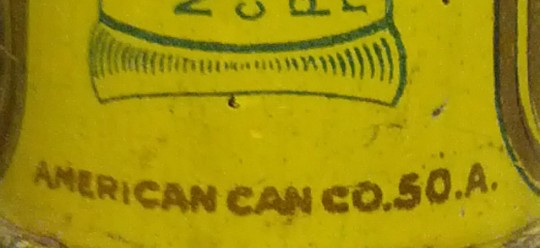
American Can Co. Factory 70 (Formerly Illinois Can Co.) with square symbol date code? From a Culture Pocket Tin
